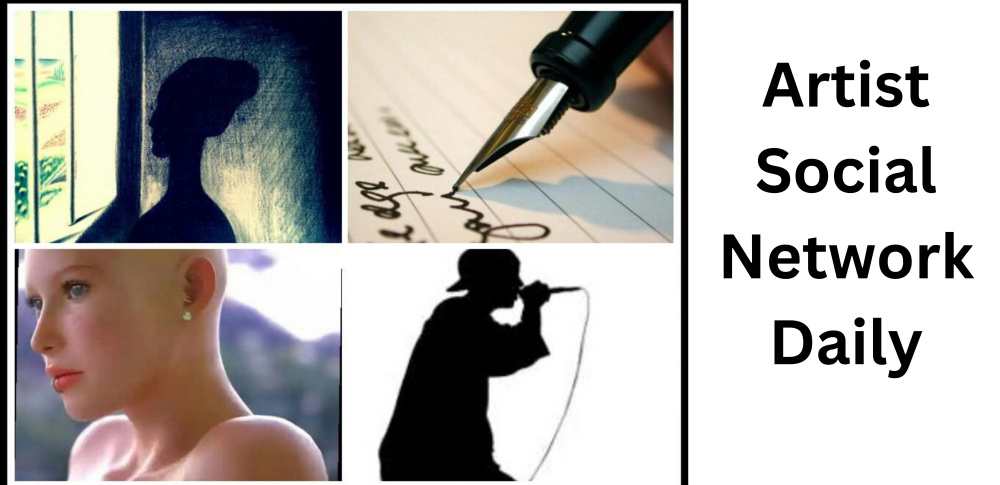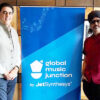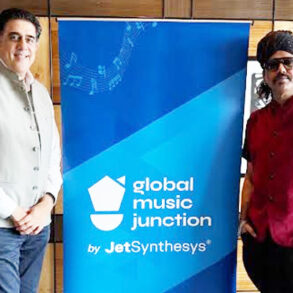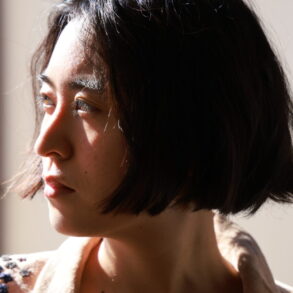Joy Harjo, the first Native American Poet Laureate in the U.S., is releasing two illustrative books this month, centered around two universal milestones: coming of age and loss. Harjo is a citizen of the Muscogee Nation. Her extensive career includes a Ruth Lily Prize for Lifetime Achievement from the Poetry Foundation, an Arrell Gibson Lifetime Achievement Award from the Oklahoma Center for the Book and a Guggenheim Fellowship for Creative Arts, among others.
Harjo’s most recent publication, Washing My Mother’s Body: A Ceremony of Grief, was published on April 1 and features illustrations by Muscogee artist Dana Tiger. The book brings a mother-daughter relationship to the forefront and the emotions that arise when a loved one walks on.
KOSU’s Sarah Liese sat down with Harjo to learn more about her poetry career, writing process and recent collaboration with Tiger.
TRANSCRIPT
Sarah Liese, KOSU Indigenous Affairs Reporter: I focused more of this interview [on] “Washing My Mother’s Body,” probably because it’s something that I’m experiencing now in a different way— this feeling of grief. But to start off, Dana Tiger, she was recently featured in Loren Waters’s film that went to Sundance, Tiger. Can you walk me through the process of choosing to make a book, specifically about one poem and having Dana Tiger do the artwork?
Joy Harjo, 23rd U.S. Poet Laureate, Muscogee elder and musician: Yes, “Washing My Mother’s Body” appeared in my book An American Sunrise, and it’s a poem unlike the others because I was so focused on Muscogee history. And my mother is not Muscogee. She comes from unenrolled Cherokees, and I’m still trying to document that. I guess one documentation I have is things that were brought over on the Trail of Tears. But anyway, when my mother passed, what came up in the middle of writing that other book is just this poem happened. And I could barely keep up writing it. Of course, I revised it. …You know, I’m an artist, and I want everything to fit together well, but every poem teaches you. Some poems have profound teachings. I wasn’t able to wash my mother’s body before the funeral home people showed up at the door to take her, and I was arguing to wash her body first. And then I let it go because I didn’t want discord. Those times are so tender. Those times in our lives— at birth, it’s such a tender moment— and things that are said and done in those moments have great impact. And so I didn’t want to disturb her journey. So there I am. Probably about 5,6, [or] 7 years later, working away on this, reading history and going around to places that have belonged to my family and my husband’s family. He’s also Muscogee Creek. And then there is this poem for my mother, and her people are actually from around there too, so that makes sense.
But the poem taught me profoundly. And I wanted to help others to know profoundly that if there is something that they couldn’t say or couldn’t do —and that they maybe feel grief about or feel some remorse about— they can do it in a poem. They can write it or paint it or sing it. You know, there’s a way to still be able to do it. And I believe that the Spirit knows that it can have an impact in a way, and it can heal you. And so this poem is really a poem where I go back in memory and wash my mother’s body.
Liese: And that idea about being able to go back in memory is something that I want to talk about. It’s more of a philosophical kind of idea. But you know, as Indigenous people, we experience sort of like a collective grief as of what our ancestors had to endure— its nuanced history depending on your tribal nation. But I was curious about this concept of being able to go back in our ancestral memory and be able to heal in that way, like what you were able to express in this poem.
Harjo: I think positive actions can have an impact not only in the present, in the future, but also in the past. And you know, we all carry so much. You know, a lot of it, we don’t even know, and it’s better that we don’t.
So, in this storytelling, it’s a narrative poem. And I got the idea that this poem might be useful. I mean, my incentive for writing has always been healing and justice. And so I proposed it to my agent and said I’d like to do a book, an illustrated book for people who are grieving. That’s why I called Washing My Mother’s Body: A Ceremony For Grief because I think every poem is essentially a kind of a ceremony. You have the title, which kind of opens the door, and the first line, every line, is a step in a direction. And so I thought it might be helpful. I got a hold of Dana Tiger. We’ve learned we’re cousins, and I am beginning to think most of us are in some way or the other (laughs). But, yeah, she agreed to do the illustrations.
I’ve worked with illustrators. You know, they illustrate, particularly, for each page. But in the book in the back, you’ll see spread across two pages, she did a large painting. Now that’s Dana. She does things in her own unique style and did this large painting. And she put everybody in it. She’s got her mother in there, and my mother… She did a wonderful job. She has a lot of our Muscogee healing plants in here. There’s all these stories buried in it, and people and plants and so on. And because plants are so much a part of us, in the clothes we wear, what we eat and with these materials around us …so what they did was cut out of the image and then make the illustrations or pieces of the painting, which is very unique. That’s not usually how it’s done. But when Dana came into the world, she wasn’t how it was usually done.
I did a foreword, and she did an afterword. I love the way that they fit together.
Liese: How long have you known Dana Tiger?
Harjo: She told me when we first met. It’s been some years ago because Wilma Mankiller was alive then, probably in the late ’80s, early ’90s, something like that. And her painting style was very different, and she’s dealt with Parkinson’s. And what I mean, we all admire her just because of her spirit. Dana’s gone through a lot in her life, as you’ll see in the movie (Tiger) that Loren Waters [produced] that just premiered at Sundance based on Dana and her family. But she brings so much lightness into the world. One of my favorite moments last year is when she was in the fashion show and was dancing around on stage. She may have been in a wheelchair that day. She’s not always. But she was up there modeling and dancing away as she modeled, that just cracked open any sadness for me that day or for weeks.
Liese: What words would you use to describe her artwork for people who aren’t familiar?
Harjo: Her artwork is very culturally centered, and it’s from the everyday lives of Muscogee people and Native people. Her images are very culturally centered and very human and plant-centered, too.
Liese: That’s something I want to get better at. I want to have better plant knowledge.
Harjo: Yes, me too. It’s important. It’s going to be even more important as we go along.
Liese: In “Washing My Mother’s Body”, you wrote, “My mother kept the iron pot given to her mother by her mother, whose mother said it was given to her by the US government on The Trail of Tears. She grew flowers in it.” These sentences struck me because I see you and other Indigenous artists, activists and professionals living out this metaphor. We’re persisting in an unjust world that we’ve inherited, and we’re trying to bloom our own fruitful visions. What advice would you give to Indigenous folks still trying to persevere?
Harjo: It’s just there. It’s just built in. You know, it’s just passed down. I got to meet one of my heroes at the Bioneers Conference in Berkeley a few days ago, Katsi Cook. She’s a midwife, cultural person from Akwesasne, and I’ve admired her for years. And she has a new book out: Worlds within Us. And it’s different stories on Native women, elders and the leading story is Henrietta Mann. One thing that struck me was she said that her grandmother used to rub her mother’s legs, which was Henrietta’s great grandmother, and her great grandmother had still had a kind of a hole in her calf where the bullet had gone in at Sand Creek. You think, ‘Whoa.’ But that’s in our stories. And yet, here’s Henrietta Mann flowering, and she’s done so much for coming out of that.
I don’t want to say it’s easy because I can say, ‘Well, it’s easy to get stuck in the tragedy and stay in a circle of addiction because it’s just too painful.’ I don’t know that that’s easy. I don’t know that’s easy because you’re constantly haunted, not only by what you’re running away from, but you’re also haunted by your own inability to act. So then it becomes like a dual circle or a dual thing. But I think we all carry grief, but we also carry that, yes, her great-grandmother ran, was able to get away. Despite that, [she] was able to survive, was able to go on and make a life in the middle of the tragedy.
Or the question like we’re seeing right now in the world is why do people continue such cruel acts against others, against other human beings, like what we’ve seen going on in the Middle East, like what we see going on in our country right now. You know, just going up and arresting somebody for no reason, even though they have a green card… they could bring on a profound new world of healing and connection with all the resources they have; instead, they’re choosing to gain more resources and destroy people, either purposefully or inadvertently. The Muscogee people who did that, who do that, are mentally ill. And I won’t go more there. But it’s something. And yet we continue. And so it’s important to celebrate the continuity of beauty, invention and industry that we see in our young people and we see in ourselves.

Shawn Miller
/
Library of Congress
WRITING PROCESS
Liese: Going back to your early career, how did you give yourself permission to be vulnerable and share intimate emotions and experiences?
Harjo: I write about that. I have a book coming out in October called Girl Warrior: A Coming of Age Handbook. I wrote about how, when I was in a poetry workshop, I felt that we were all vulnerable. We were in a circle at a seminar table, and that made it easy. I just felt we were in a circle of vulnerability, so to speak, or learning. When you share it with an audience, is another whole thing.
I think we were all given gifts and part of that is to share because in a way, it’s your power. It’s like people are given great power, and we’re watching some of this play out. They can start to believe that it’s their power. And when that happens, all kinds of things go awry. I guess bottom line is it doesn’t belong to you.
I feel like what I’m doing is a culmination with my birth or my life. I stepped into an accumulation, and so I took it up. I didn’t plan to. I had no plans to be a poet. Some people do. But, you know, the Native students, a lot of us were first-generation people going to college. I was on one side of my family. The other side: my grandmother and great aunt both had BFAs in art. My grandmother played saxophone in Indian Territory. But people were going to college for education, for medical fields, to be Native attorneys. And poetry to everyone seemed frivolous, like it wasn’t necessary. But you come down to someone dying, you come down to falling in love, falling out of love, you come down to marriage, you come to those moments of transformation, of being tested as a human being. And poetry is there.
Liese: What about writing about knowledge that might be considered more sacred, such as creation stories?
Harjo: There are things that don’t belong in writing or even in the English language. And there are things that don’t belong outside of different places. They belong in certain places, and when you move them from there, they become ill or they become dangerous. So I think most of us, who are growing up in our cultures, we know those things and we don’t trespass. And so that’s kind of the unwritten and maybe even written law. I don’t know. It’s, you know, that you don’t go into those places.
Liese: You mentioned “Washing My Mother’s Body” offers healing to you, but also the reader. And moving through grief, it’s heavy. It’s a dense emotion. Were there any poems or writings at that time when you lost your mother that you kept to yourself? If so, how did you decide not to publish them publicly?
Harjo: Well, I don’t know if I wrote much at that time. I may have journaled. I may have written notes. I’m always writing notes or dreams. I had probably one of the most telling and incredible dreams I’ve had in a while this morning, and that’s what I did: I woke up and wrote that all of that down.
It’s almost cyclic, a periodic where I’m writing a lot of notes, and sometimes I don’t write very much. And around my mother, of course, there was heavy grief. I think I published one poem, but it wasn’t as personal as this one.
For a Girl Becoming, I didn’t have in mind that being a book, except what I noticed is when I would I started reading it, because it was for my oldest granddaughter’s coming of age— is that people responded. And there was a lot of healing in it that people needed, and so that’s how that happened.
But yes, I don’t know. Some people will have something like that happen, and they’ll write a whole book. And there are some things I don’t put out in public or write about that. You know, it’s not necessarily for the public. And I don’t know that I even write for the public, so to speak. I’m just writing what moves me as an artist, and sometimes I’m asked to write certain things, but they have to be something that you know moves me.
Liese: When did you start journaling?
Harjo: I didn’t even call it journaling. I was just writing notes or writing dreams, probably when I was a student at the University of New Mexico. I had a little diary as a kid. But my stepfather, you know, I had it hidden, and he had enough nerve to go find where I had hidden it and started reading very personal things aloud to the family and laughing to shame me or to embarrass me, you know, a deliberate hurtfulness. So I didn’t write anything for a while, and then, as an undergraduate, I learned about independent studies. And I started doing as many of those as I could because I loved that I could pick out a particular area I wanted to study and read about and get credit for it. I was a studio art major, and I think that’s when I started writing. I took a creative writing class, and I just started writing notes, journals [and] sketch ideas. You know, all kinds of things go into it. And one of my favorite journals is one that has pictures as well as words.
Liese: I can relate to that a lot, and I think that’s why I’m so drawn to your work as well. I just feel like there’s something so soulful and something that you’re connecting to— it’s your own personal experience, but you’re connecting to something bigger than you. And it just feels like it sort of flows out of you.
Harjo: Yeah, but some of that flowing is a lot of work behind it. It’s like, if you go to a dance or a ballet or something, and it just looks so natural, and you have no idea what’s gone behind it. There’s just hours and hours and study behind that to make it even flow, because something can flow in your mind, in your imagination. But the challenge sometimes is getting that flow state or that lightness of being, so to speak onto paper or into the ears, and that can take a little bit of practice. But some things do come that way. I think a lot of what I do is that I’m just kind of the note taker. I’m open, and I take in what they give me; they being ancestors, plant spirits— you know, the inspiration, things that I hear, things I’m around. And it comes through, and then I craft it. I’m the one with the hammer and the nails.
But what artist does with that craft is often beyond them because, as you’re in it, you find out new things. Sometimes that thing puts you in a place where people may not understand because you’re a little bit ahead. I was telling a young artist who was very dismayed because their early book is not getting the [attention] what they want. You know, they have great ideas and really believe in their work, which is good. But they’re disappointed because they didn’t get the big poetry award. And I said, ‘Look, I didn’t start getting recognized that way until it’s in my 60s. I just do my work because I love that sense of play with what I’m hearing and the quality sounds of language or the sounds of music or so on.’
When I was an undergrad student working with our Native student club at the University of New Mexico, I was so inspired by the beauty that the people were bringing forth, but also in seeing how they were moving through struggle. And that’s what really motivated me to start writing.
Liese: I think you brought up a really good point. Poetry takes a lot of work and editing, knowing when it’s finished, and knowing when to accept critiques. I’m curious about your journey with that as well.
Harjo: I remember that in my first drawing class at the University of New Mexico, I was so pleased with what I was doing. And that’s always a warning signal (laughs). We were doing a still life. It was a 101 drawing class, and so I was drawing away on my drawing board. And then the professor said, ‘OK, everyone now, stand back, get up and walk back.’ It was so off because I didn’t have the perspective. And you know, we get so close up because of our emotional field, or our thought field, can get in the way. And you have to be able to stand back and get a perspective.
You know, whether it’s your art or your life— which are the same, as far as I’m concerned— we need that perspective. And sometimes it comes from children, you know, elder children, or a teacher. It can come from the teachers that teach us in our spirit, too.
I have an incredible editor at Norton, the publisher of my poetry. And For a Girl Becoming, we went round. We agree on things, and some not. And there was the title of a book I really wanted, and she just couldn’t go with it. So I came up with another. I trust her enough. And some things, I’ll just say, ‘No, I like it the way it is.’
Right now, I’m trying to search for the name for an album I just recorded, and there’s 10 songs in it. I haven’t found the title yet. But what happens with time? It clicks. There’s something; there’s like a click into place. I haven’t found it yet.
… If you look at creative work at any level, the best stuff is when somebody kind of gives it over and goes beyond the expected. Like, not only do you help somebody cross the street, you give them some money or you take them to dinner. You know, just those small acts make a huge difference, where you go beyond to help somebody else. And I think about what can each of us do in this moment?
But we have to remind each other we’re human beings. Because it seems to me that a lot of this destruction we’ve dealt with on the intimate and massive scale in the world has come down to people who have have taken on a belief or had it hammered into them because of a belief system that they are the only ones who are right, and no one else has the right to an opinion …whether they’re political cults or religious cults. And it’s just not that way. We live in a diverse world, and you can try to outlaw it. That’s not going to work.
We are human beings. We’re all different. … And I’ve lived in states, I won’t say which one [or] where. And when I come back here, sometimes it’s very painful because there seems to be a doctrine or a way. It wasn’t always that way. And what does that come out of? That comes out of fear because if you’re really enjoying your life or you believe in yourself, you’re not over trying to enforce your belief system on somebody else by gun or by putting people in prison. You know, our Muscogee people, and I think most Native nations, we had no need for jails or prisons or orphanages. We took care of each other. We had ways to deal with these things in a way that didn’t cause more suffering.
This transcript has been lightly edited for clarity and brevity.
This post was originally published on this site be sure to check out more of their content





